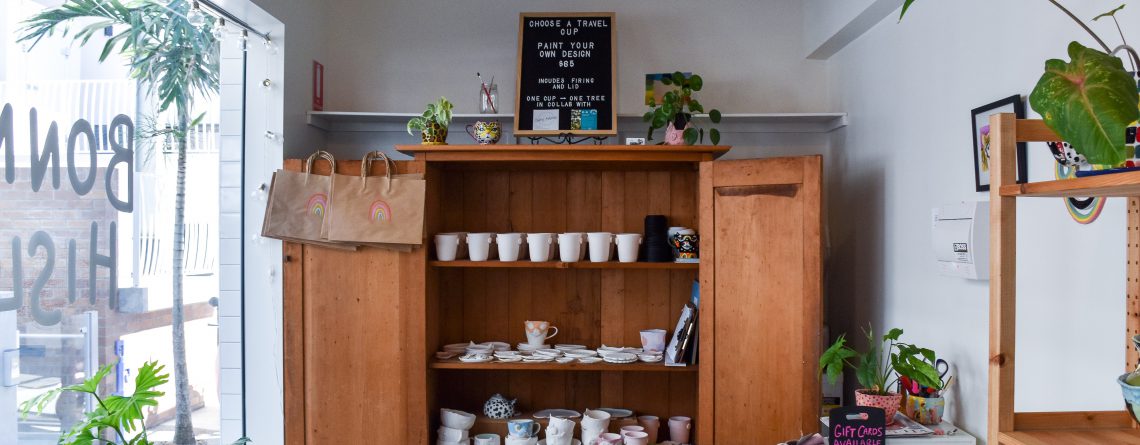3 steps to finding your business niche
Whether you are opening a new business or running an existing one, finding a niche in your market is essential for success.
If you’re an existing business, one of the best methods to finding a niche is to listen to the requests of your existing customer base. When a customer asks for a product or service, note it down and if it’s not offered by competitors, consider the possibility of including it within your offering.
If you’ve not yet started on your business journey you might have an idea or a passion that you cannot let go of to build your business around. But before you launch anything, you will need to identify if there will be demand for your product or service. If there is no demand, it won’t work.
The best way to check for demand is to reach out to your target market. Go out onto the streets, talk to friends, look on social media, dive into Google Trends. There are plenty of tools to double check if there will be enough want or need for your offering before launching your business.
What is a niche?
Finding your niche is challenging, so let’s start from the beginning. A niche is a focused area of a wider market that businesses can use to make their offering unique from the competition. Typically, it is an unmet or underserved need that can be filled with a product or service.
Finding a niche: dairy free coffee shop
Say you want to open a coffee shop in your local area. It’s very residential, so the potential market is good, but there are two other cafes within 2km. What would bring people to your coffee shop over one of your competitors? Perhaps a dairy free coffee shop for those who are vegan, lactose intolerant or health conscious.
First things first, ask around the local area if this would be something of interest. Knock on people’s doors, post on the neighbourhood’s Facebook page, and check for the demand of dairy free products on Google Trends in Australia. If it looks promising, do a bit of digging into suppliers and a location but most importantly, put together a business plan.
Finding a niche in 3 steps
When finding a niche for your small business, consider these three areas:
Passion
Do you have a passion that could make money? If it can make money, is it enough to create a sustainable, profitable business? The plus side is if you design your offering around something that you want, then you already have some market insight.
Above all, creating a business is hard work. It requires time, energy, and a great deal of determination. If you are not invested in your idea it will quickly become a chore. Pick something that you love first – something that you can imagine doing everyday – and learn how to make money from it.
Diana Williams
With 68 fitness clubs and over 2,000 employees, Diana Williams overcame suspicion and rejection from lenders to create the first female only fitness club. Diana fell in love with fitness and weight training after her kids left home but didn’t have the best experience in mixed gender gyms, finding the weight training area intimidating.
Realising that she wasn’t the only one to feel the same, she created Fernwood fitness – a space for women to feel comfortable and work out within a more feminine environment. The popularity of the idea and the demand it created is the reason for its success – it met a need no other gym was meeting.
Skill
Do you have a skill? If so, can that be turned into a commercial opportunity and is it a niche? Maybe you’re not great with animals, perhaps opening a petting zoo is not the best idea. Perhaps you’re creative, so consulting on tech development is not the way to go. But overall, using your skillset as the basis of your business gives you an advantage above the competition – you have an established understanding of what you’re trying to create.
Leah Itsines
Leah is an Adelaide based food influencer and chef turned restaurant owner and writer. With her Balanced And Realistic Eating (BARE) guide, Leah’s ambition is to help women with balanced, nutritional meals for a healthy lifestyle change.
After growing her Instagram following to over 400k, Leah noticed a gap in the market for an easy to follow food guide for the modern Australian woman. Taking note of the comments and suggestions from her followers, Leah has created a recipe guide that fulfils the needs of her customer base. She monitors their requests via social media and comes up with new recipes that follows her balanced meal mantra.
Demand
Define
As we’ve said previously, you must check demand before launching your business idea and the best way to do this is to conduct market research. Before conducting research, you’ll need to define your target persona. Ask yourself the following questions:
- What kind of buyer will your business target?
- What age and gender are they?
- Are they regionally based, or metro based? Do they live in the CBD or in an outer suburb?
- What do they do for work? Where do they work?
- What is their income? What is their socioeconomic background?
- Level of education?
- Where do they socialise? Do they have a family?
- What do they read, watch, or listen to?
Competition
Is there a market in your area? Are there any competitors? Generally, the presence of competitors isn’t always a bad thing – it demonstrates a level of demand. Once you’ve decided on your idea conduct a thorough analysis of competitors within your market and local area. Then, find a way to differentiate yourself from the competition. This might be sourcing sustainable products, decreasing or increasing your pricing or improving your quality.
Research
Conduct some research. Put together a survey or a focus group of people you think might fit into your target market and utilise social media to collect data. Find communities of people online – think Facebook, Twitter, Reddit, Quora and just ask – you will be surprised with how many people are willing to help.
A simple market research survey needs to answer the following questions:
- Who is my target market?
- Is my product or service idea in demand?
- How much are people willing to pay for my product or service?
You’ve answered the first question in the survey example above – this will provide an overview of the demographic or behavioural qualities of your potential target market. To gauge demand, you’ll need to gather data on competing product offerings.
- Do people use competing products or services?
- What aspects do they like about them?
- How long have they used them and how did they use about them?
Next, you’ll need to present your idea in an easy, readable format that takes no longer than 20 seconds to skim through. Present your idea in a way that can be understood immediately. You will often hear “Linkedin for…” or “Uber for…” to quickly explain a concept. Think about a likeness in the market that the respondents will know well and say how you differ.
The final element is to find out the willingness to pay. Ask the following questions:
- Which of the following prices would you consider too expensive?
- Which price do you consider too low, changing your perception of its quality?
- At what price do you feel the product is slightly expensive, but you would still buy it?
- Of the following prices, what would you consider to be great value for money?
Once you’ve got these questions answered, you’ll have a better understanding of what your buyer looks like, how much they’ll pay and if there is a desire for your product in the market.
Overall, have confidence
After all of this, you’ll still have a long way to go — from coming up with a business name to creating and promoting your products — but a solid grounding will get you and your business off on the right path.











Leave a Reply